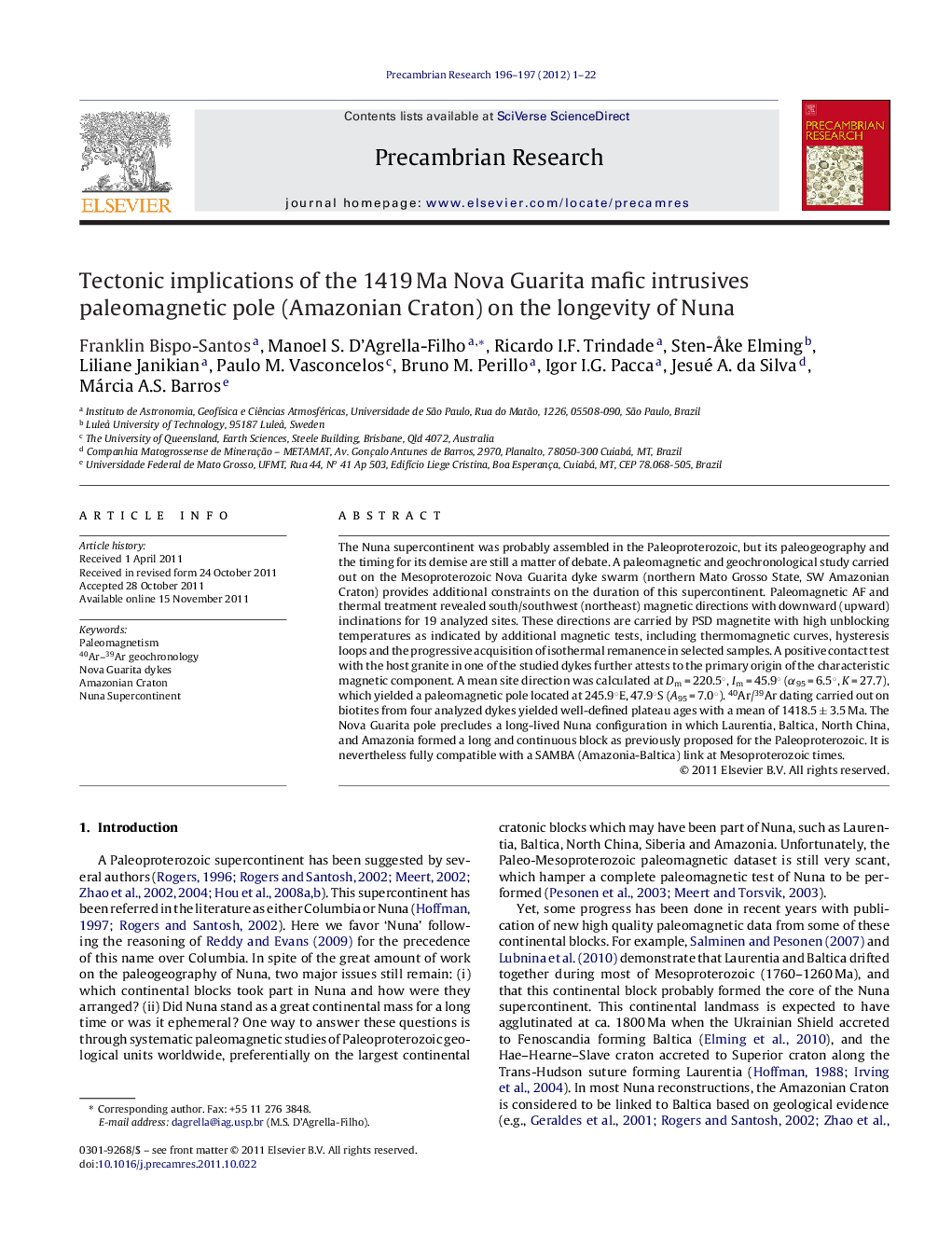| Article ID | Journal | Published Year | Pages | File Type |
|---|---|---|---|---|
| 4723594 | Precambrian Research | 2012 | 22 Pages |
The Nuna supercontinent was probably assembled in the Paleoproterozoic, but its paleogeography and the timing for its demise are still a matter of debate. A paleomagnetic and geochronological study carried out on the Mesoproterozoic Nova Guarita dyke swarm (northern Mato Grosso State, SW Amazonian Craton) provides additional constraints on the duration of this supercontinent. Paleomagnetic AF and thermal treatment revealed south/southwest (northeast) magnetic directions with downward (upward) inclinations for 19 analyzed sites. These directions are carried by PSD magnetite with high unblocking temperatures as indicated by additional magnetic tests, including thermomagnetic curves, hysteresis loops and the progressive acquisition of isothermal remanence in selected samples. A positive contact test with the host granite in one of the studied dykes further attests to the primary origin of the characteristic magnetic component. A mean site direction was calculated at Dm = 220.5°, Im = 45.9° (α95 = 6.5°, K = 27.7), which yielded a paleomagnetic pole located at 245.9°E, 47.9°S (A95 = 7.0°). 40Ar/39Ar dating carried out on biotites from four analyzed dykes yielded well-defined plateau ages with a mean of 1418.5 ± 3.5 Ma. The Nova Guarita pole precludes a long-lived Nuna configuration in which Laurentia, Baltica, North China, and Amazonia formed a long and continuous block as previously proposed for the Paleoproterozoic. It is nevertheless fully compatible with a SAMBA (Amazonia-Baltica) link at Mesoproterozoic times.
Graphical abstractFigure optionsDownload full-size imageDownload as PowerPoint slideHighlights► New paleomagnetic and Ar–Ar results for 1420 Ma mafic dykes from the Amazonian Craton. ► A baked contact test attests the primary nature of remanent magnetization. ► The Nova Guarita pole precludes a long-lived Nuna configuration comprised by Laurentia, Baltica, North China, and Amazonia. ► It is nevertheless fully compatible with the SAMBA (Amazonia-Baltica) model at Mesoproterozoic times.
